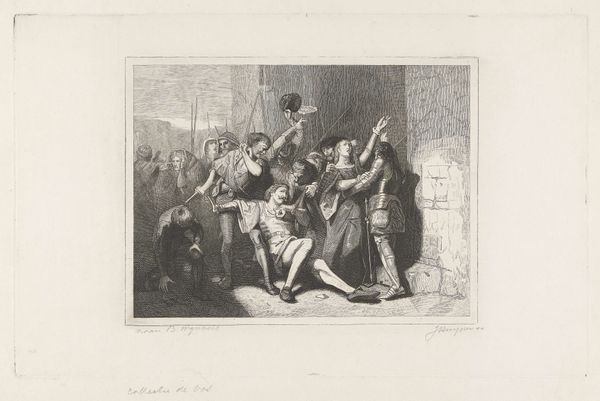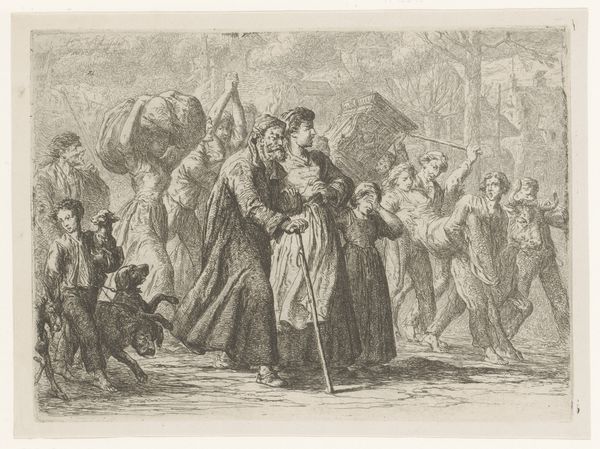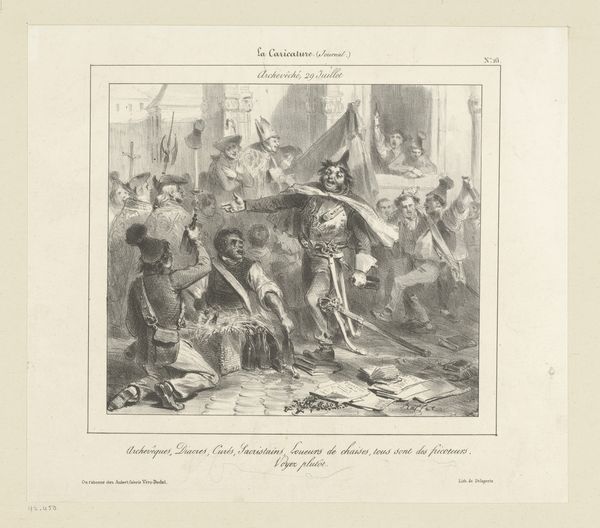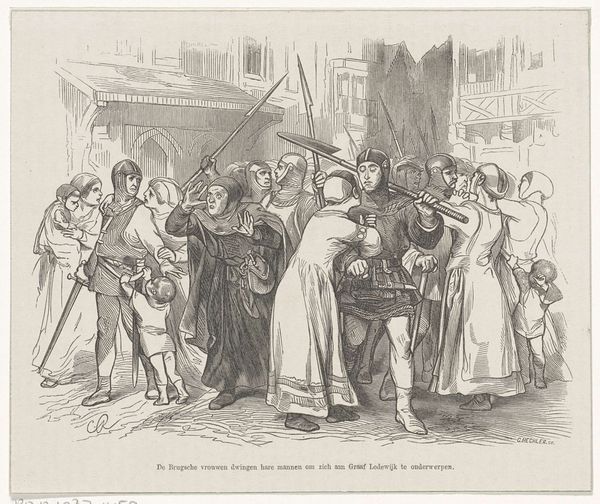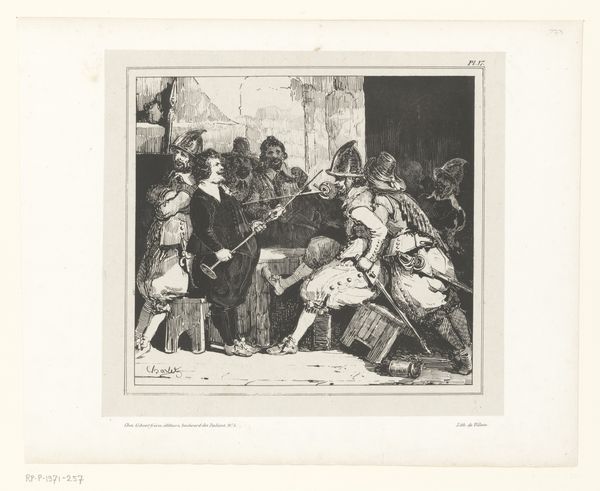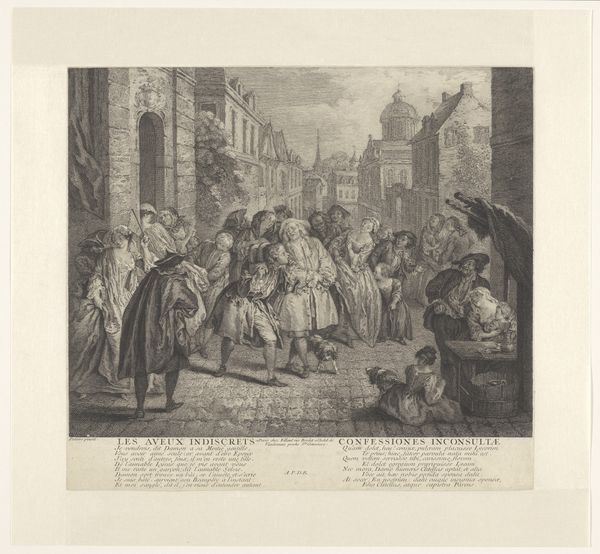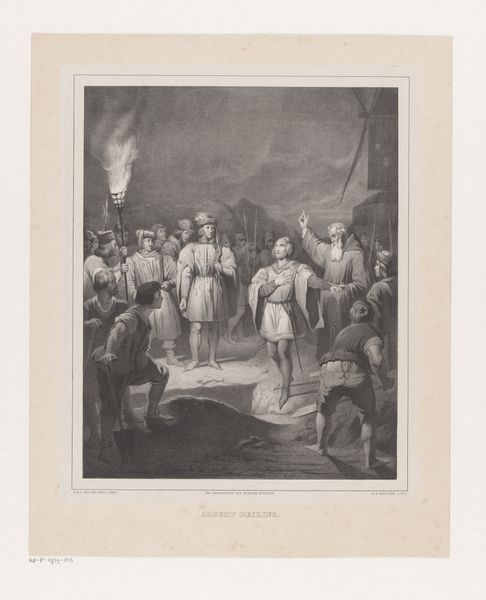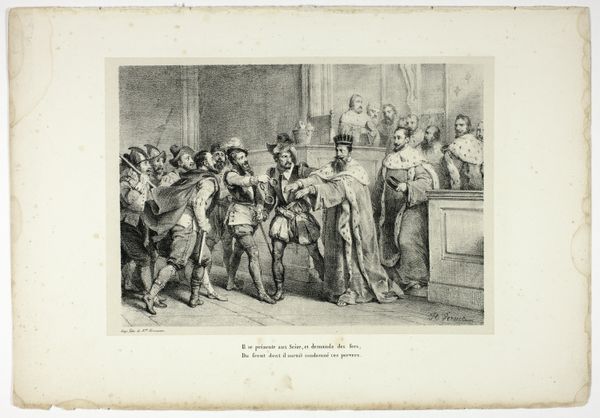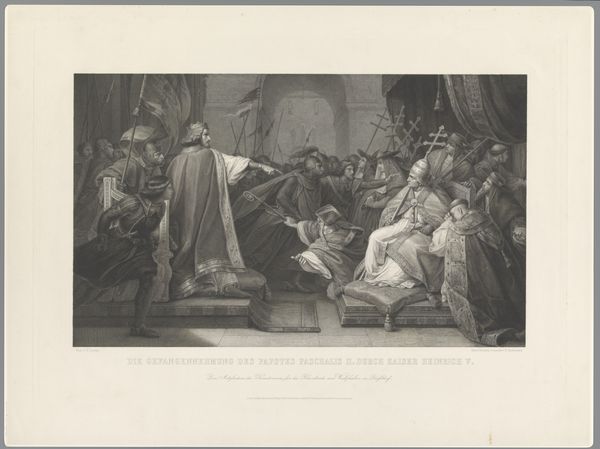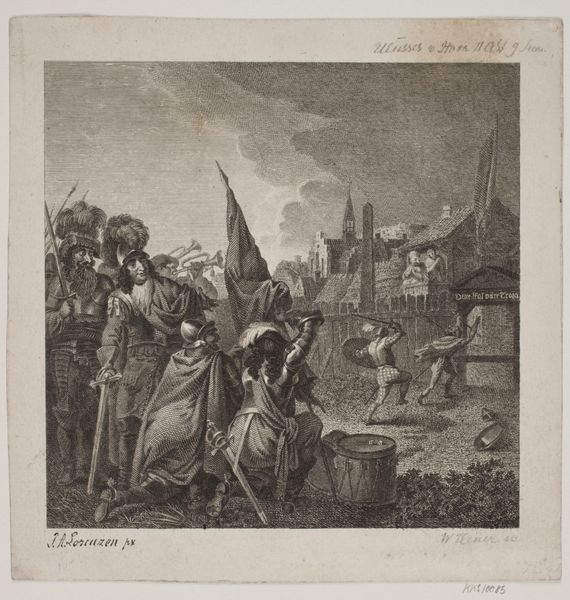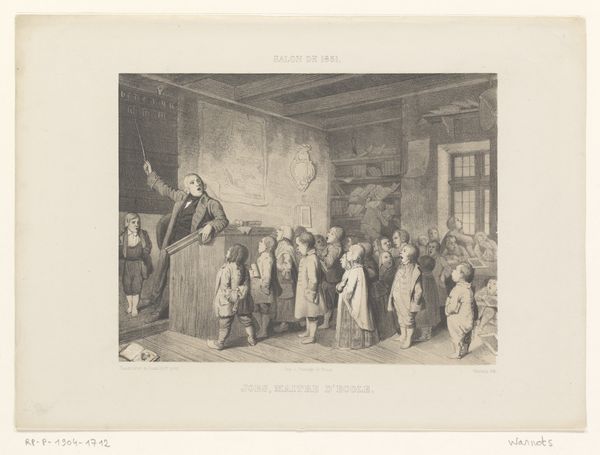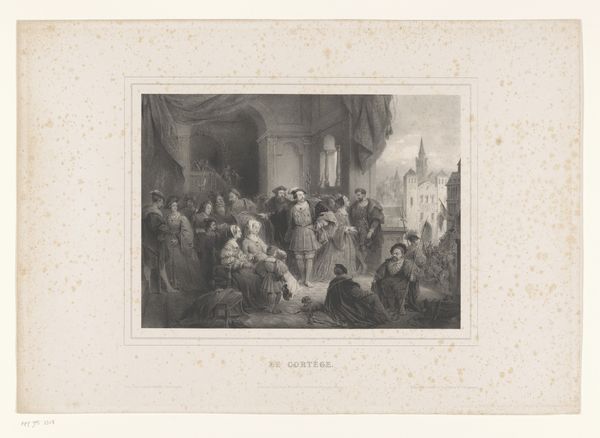
Intocht van Willem van Gulik, hertog van Gelre in Nijmegen, 1388 1842 - 1844
0:00
0:00
johannwilhelmikaiser
Rijksmuseum
print, engraving
#
portrait
# print
#
romanticism
#
genre-painting
#
history-painting
#
engraving
Dimensions: height 215 mm, width 260 mm
Copyright: Rijks Museum: Open Domain
Johann Wilhelm Kaiser created this engraving, "Entry of William of Jülich, Duke of Guelders, into Nijmegen, 1388," in the 19th century. It depicts a historical moment through the lens of 19th-century nationalism. The scene captures Duke William's ceremonial entrance, a symbol of power and authority during the late medieval period. However, the work was created during a time of burgeoning national identity, and revivals of the past were often deployed to serve contemporary political agendas. Kaiser, working within this context, might have been seeking to evoke a sense of shared history and cultural pride. Note how the Duke is portrayed – not just as a ruler but as a figure central to the city's narrative. Consider the expressions of the onlookers, a mix of awe and reverence, which speak to the dynamics of power and the construction of leadership. Does this image present a straightforward historical event, or does it offer a constructed vision of the past, shaped by the cultural and political values of Kaiser’s time?
Comments
No comments
Be the first to comment and join the conversation on the ultimate creative platform.
